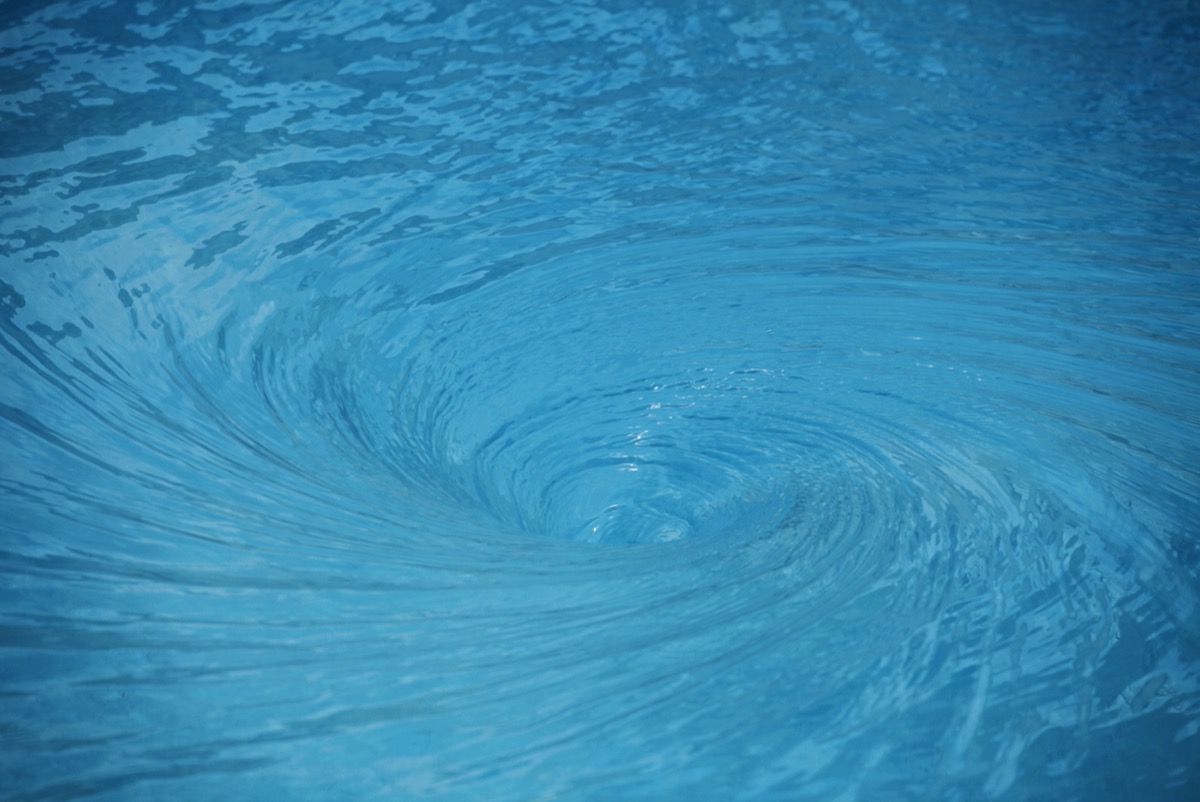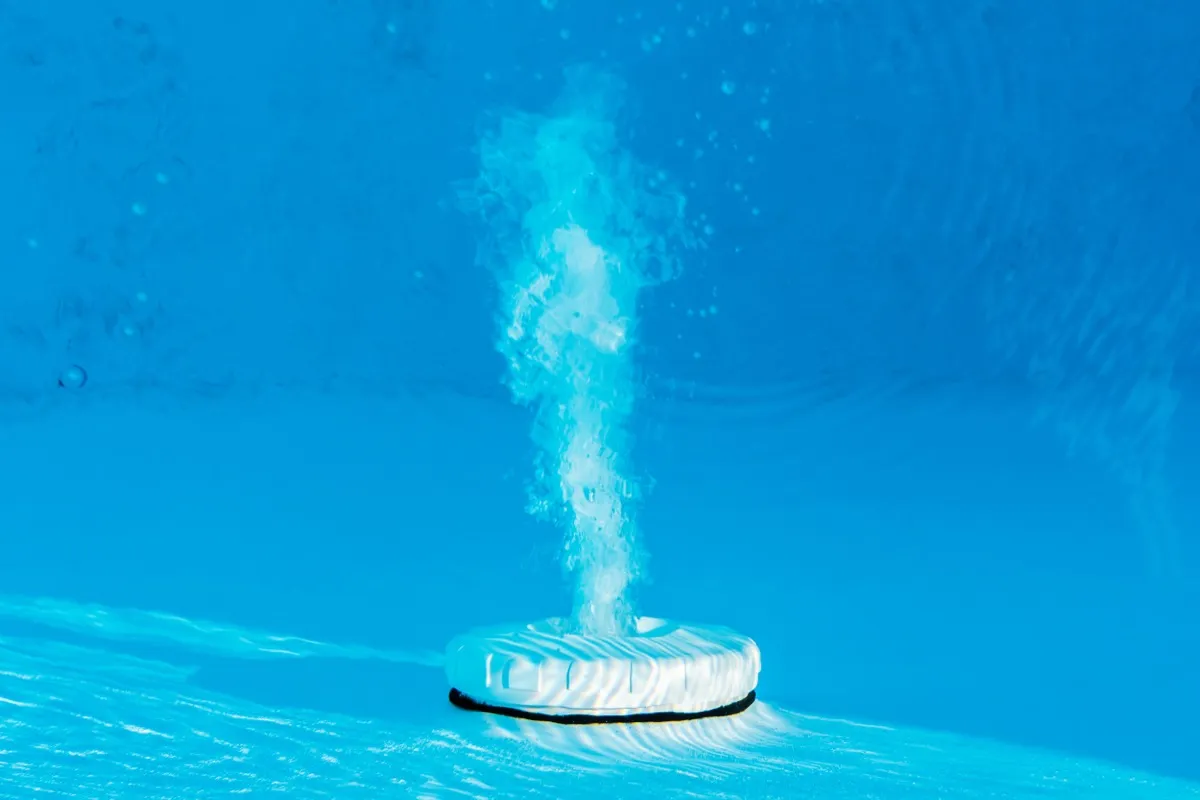If You See This in a Pool, Don't Go In, Experts Say
Before you so much as dip a toe in the water, keep an eye out for this potentially fatal hazard.

With summer here and the days heating up, many people are dreaming of their first summertime dip in the pool. However, before you so much as set foot in the water, there's a serious risk experts want you to look out for. Before you go swimming this summer, read on to discover the one safety hazard you can't afford to ignore.
RELATED: Never Go in a Lake If You See This One Thing, Local Officials Warn.
If a pool drain isn't properly covered, don't get in.

It's not just more obvious signs of problems, like visible debris or opaque water, that may indicate it's a bad idea to go swimming in a particular pool.
"If you see a missing or broken drain cover in the pool, don't go in, or get out as soon as you can," says Matthew A. Dolman, Esq., managing partner at Sibley Dolman Gipe, a personal injury law firm. Pool drains are typically located in the deepest part of the pool; hot tub drains may also be located at the bottom of the tub, but are sometimes located on the tub's side.
For more health and safety news delivered straight to your inbox, sign up for our daily newsletter.
Uncovered pool drains can cause potentially fatal entrapment hazards.

According to the International Association of Certified Home Inspectors (NACHI), pool drains can exert 350 pounds of pressure.
"If the circulation system is working properly and the drain covers are missing, there's a strong chance that the pressure from the pool pump can drag you underwater and entrap you as you try to swim," explains Dolman, who also notes that a missing or improperly installed drain cover also means a pool's water isn't being adequately filtered, presenting bacterial contamination hazards, as well.
Pool drain entrapment causes multiple injuries each year.

According to a report published by the Consumer Product Safety Commission (CPSC) in 2019, there were nine reports of injuries related to circulation/suction entrapment in pools and spas between 2014 and 2018, and two fatalities, all among victims under 15 years of age.
The CPSC recognizes five types of circulation/suction entrapment: body, limb, evisceration/disembowelment, hair, and mechanical, the last of which refers to when "involves articles of clothing, jewelry, or appendages caught in an outlet cover." Due to the pressure exerted by pool drains, getting suck on a faulty pool drain can quickly lead to serious injury or death.
If you have a pool, you can protect against these hazards.

While all pool drains should be covered, some types of drain cover that provide better protection against circulation and suction hazards than others.
In 2007, the Virginia Graeme Baker Pool and Spa Act (VGBA) was signed into law following the 2002 death of 7-year-old Virginia Graeme Baker due to suction entrapment by a hot tub drain. According to the act, all pool covers installed after Dec. 19, 2008 must comply with new pool drain standards as defined by the CPSC, and all public pools and spas to be retrofitted to avoid entrapment hazards.
According to The Association of Pool & Spa Professionals (APSP), having home pools and hot tubs retrofitted to include compliant domed, rather than flat, drain covers can help reduce the risk of entrapment-related injuries.
RELATED: If You See This at the Beach, Don't Go in the Water, Experts Warn.





















